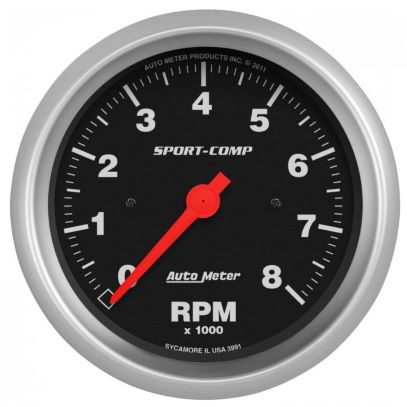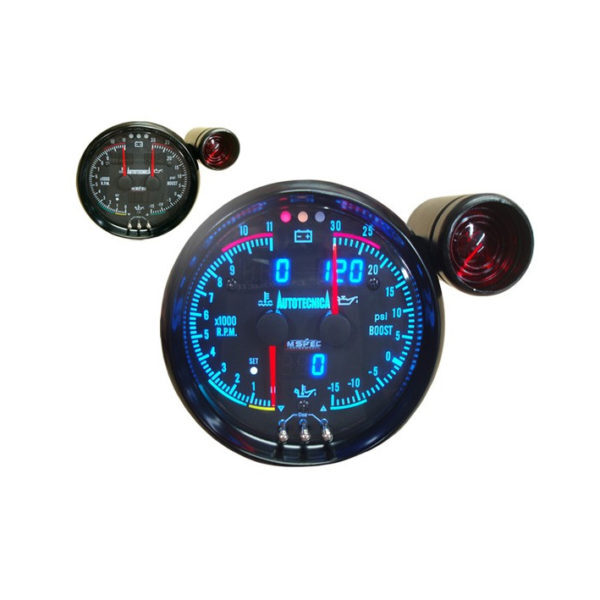Comprehensive Guide to Understanding and Utilizing a Tachometer Properly
Comprehensive Guide to Understanding and Utilizing a Tachometer Properly
Blog Article
The Value of a Tachometer in Monitoring Engine Speed and Efficiency in Automotive Applications
In the realm of automotive engineering, the tachometer stands as a pivotal instrument in the chauffeur's collection, providing a straight home window right into the inner functions of a lorry's engine. Beyond its feature as a mere scale of transformations per min (RPM), the tachometer serves as a vital tool for fanatics and experts alike, offering real-time insights right into engine efficiency and health and wellness.
Importance of Keeping Track Of Engine RPM
Checking engine RPM, or changes per minute, is an important element of automotive upkeep and performance assessment. Engine RPM directly correlates with the rate at which the engine's crankshaft rotates, indicating exactly how promptly the engine is running - tachometer. By checking RPM, technicians can evaluate the health and wellness of the engine, identify possible concerns, and fine-tune efficiency. An abnormal RPM analysis might signify problems such as engine misfires, malfunctioning ignition system, or issues with the gas shipment system. Continually high RPM readings could show hostile driving practices or the requirement for a greater equipment shift to enhance fuel effectiveness.
Furthermore, checking engine RPM is crucial for efficiency evaluation in auto racing and high-performance cars. In summary, checking engine RPM is not just crucial for discovering issues yet additionally for enhancing engine performance in different automotive applications.

Advantages of Real-Time Data
In auto applications, real-time data plays a critical duty in giving instant insights into the efficiency and problem of the vehicle. By continually monitoring various specifications such as engine rate, temperature level, fuel usage, and a lot more, real-time data supplies numerous advantages that contribute to improved efficiency and safety when driving.
One substantial benefit of real-time data is its capacity to alert vehicle drivers and specialists to any type of anomalies or issues immediately. This aggressive approach makes it possible for fast identification of potential issues, permitting prompt interventions to prevent additional damage or break downs. Furthermore, real-time data helps with efficiency optimization by giving instant feedback on driving practices and engine effectiveness. Vehicle drivers can readjust their actions in real-time based on this info to achieve much better fuel economic situation and prolong the life-span of their vehicle.

In addition, real-time information plays a vital duty in modern-day automobile diagnostics, making it possible for technicians to rapidly diagnose and deal with breakdowns. This leads to minimized downtime, lower upkeep prices, and eventually, boosted overall automobile integrity and longevity (tachometer). By utilizing the power of real-time data, automobile stakeholders can make enlightened choices that favorably influence both the performance and longevity of the automobile
Effect On Gear Shifts
The tachometer plays a vital duty in maximizing gear changes by giving real-time engine speed information to the motorist. When coming close to the redline on the tachometer, it signals the driver to upshift to protect against over-revving the engine and triggering prospective damage.
Additionally, the tachometer aids in accomplishing smoother gear changes, particularly in hand-operated transmissions. By monitoring engine rate, chauffeurs can carry out equipment shifts at the ideal RPM variety, lowering snagging movements and decreasing wear on the transmission parts. This precision in equipment changes not only improves driving convenience however also adds to sustain effectiveness.
Enhancing Fuel Effectiveness
Provided the critical role the tachometer plays in enhancing equipment shifts for efficiency and engine health and wellness, it directly contributes to optimizing fuel effectiveness in automobile applications. By offering real-time responses on engine rate, the tachometer aids vehicle drivers in maintaining the most effective RPM range for fuel economic climate. When drivers regularly monitor the tachometer and adjust their motoring routines accordingly, they can stay clear view it of unneeded fuel intake triggered by over-revving or lugging the engine.
Furthermore, the tachometer aids motorists determine the most fuel-efficient equipment to be in at any type of given minute, protecting against the engine from working tougher than needed. In verdict, the tachometer offers as a useful tool in boosting gas efficiency by promoting optimum driving practices and identifying locations for improvement in the vehicle's efficiency.

Making Best Use Of Engine Longevity
The tachometer's function in keeping track of engine rate and efficiency is crucial in making certain the durability of vehicle engines. Keeping track of the tachometer permits chauffeurs to stay within the recommended RPM range for their vehicle, avoiding unneeded pressure on linked here the engine look what i found and expanding its life-span.

Conclusion
Finally, the tachometer plays a critical function in keeping track of engine rate and performance in automobile applications. By offering real-time data on RPM, it enables efficient equipment changes, enhanced gas efficiency, and made best use of engine long life. This tool is vital for keeping ideal engine performance and guaranteeing the general capability of a car.
Report this page